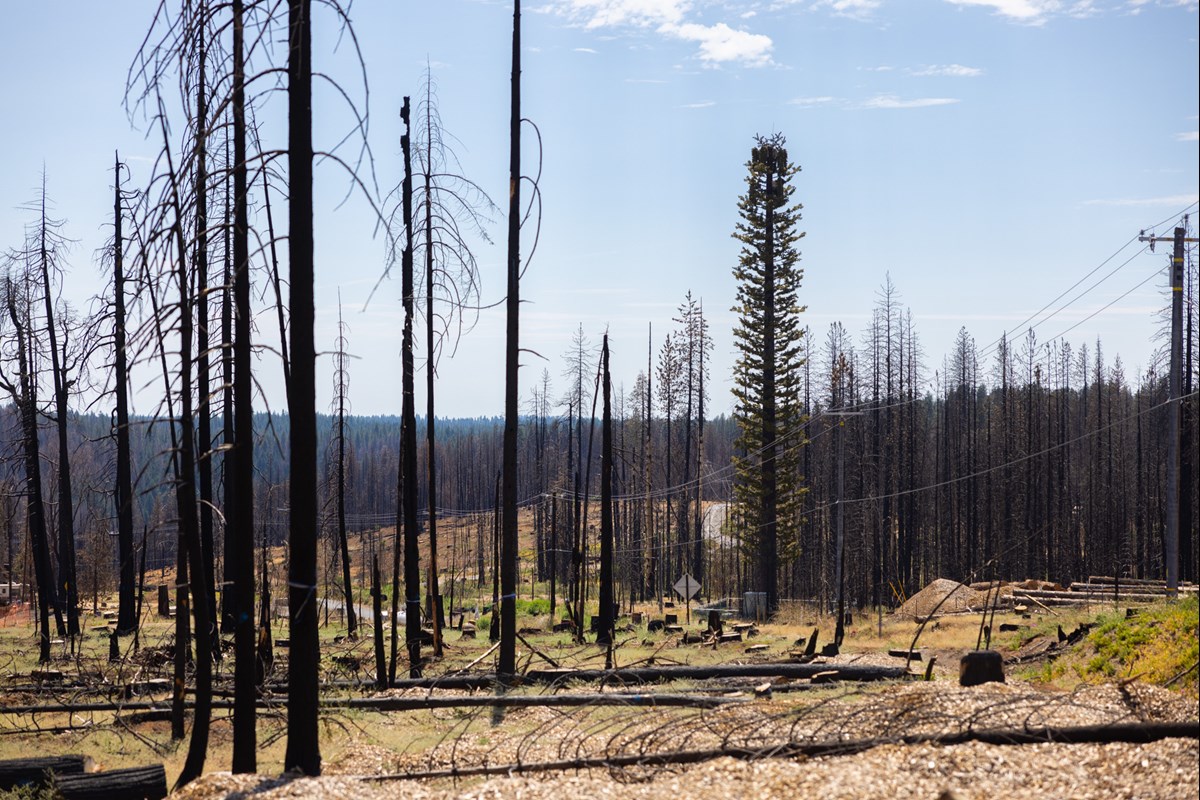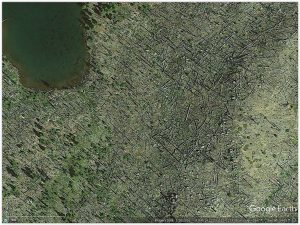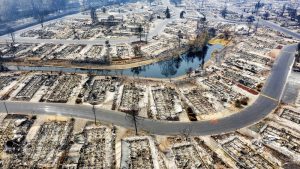This is a really interesting story.. thanks to Michael Wara on Twitter! It goes into the nuts and bolts of why a project on the Eldorado didn’t get done on time to help a community. A conversation followed in which the question was asked whether fuels funding is targeted to the communities that need it most or have more people/political clout or matching funds due to people/political clout. This was a topic of discussion in Colorado even back when I was working.. partnerships are good and to be fostered, but to what extent is there also an environmental justice component and how should that be addressed? For example, the State of Colorado requires less of a match for state wildfire mitigation grants in areas that it has mapped as lower income.
Anyway, really good and lengthy article, lots of interviews with FS folks, no paywall so you can read the whole thing. There’s several pieces about “what slowed the project down that could have helped.”
The Forest Service originally committed to finishing the Trestle Project by 2020 — a year before the Caldor Fire would later ignite. Due to a complex web of regulatory delays, logistical challenges and resource shortages, the agency pushed back the completion date to as late as 2032 — three decades after its initial warning to Grizzly Flats.
**********************
Nelson helped devise the Trestle Project as a big step toward his goal. It would create a miles-wide fuel reduction buffer east and south of Grizzly Flats.
When the Forest Service finally announced the project in 2013, the agency sent a letter to residents describing 16,000 acres of planned work. (A miscalculation led to the document overstating the work by nearly 1,000 acres. The actual number was just over 15,000.) It laid out an expeditious — and optimistic — timeline. The analysis was supposed to take about a year, with the forest management work scheduled to wrap up by 2020.
Almost immediately the project encountered an onslaught of hurdles and delays.
“It’s sad to think about what could have been,” said Michael Wara, a climate policy expert at Stanford University who recently toured Grizzly Flats. “[If] all this work was done by 2020, Grizzly Flats might still be there.”
‘We Don’t Have That Kind Of Time Any Longer’
One of the most aggressive objections to the Trestle Project came from Chad Hanson, co-founder of the John Muir Project, a nonprofit that aims to protect biodiversity in national forests and fiercely opposes tree removal. One of Hanson’s primary concerns was the spotted owl, which is designated as “threatened” under the Endangered Species Act.
In a written objection to the Forest Service in 2015, Hanson argued the Trestle Project would “pose a serious and unacceptable threat to owl populations on the Eldorado National Forest.”
Elsewhere, Hanson has argued that commercial tree removal could exacerbate wildfire intensity. Leading fire scientists have publicly pushed back against a number of Hanson’s claims; one expert even called his positions “self-serving garbage.”
The project’s 296-page environmental impact statement devoted dozens of pages to analyzing potential impacts on the spotted owl. The report also invited public comment that demanded thoroughly researched responses from the Forest Service. The agency developed alternative maps, taking into account spotted owls and sensitive species of frog and trout.
The Forest Service also put out other reports, including one that identified a likely ignition point very close to where the Caldor Fire would later start.
As the Forest Service spun out reams of paperwork, Almer reminded the agency that Grizzly Flats remained woefully exposed to wildfires that were growing more severe every year.
“The most aggressive treatment of the [Trestle Project’s] fire fuels is critical to preventing the ‘loss of our community,’” wrote Almer in a 2015 public comment about the project on behalf of the Grizzly Flats Fire Safe Council. “Everything that can be done, must be done.”
He followed up this plea with a 2017 letter addressed to Randy Moore, who at the time led the agency’s Pacific Southwest Region.
***************
Over the next four years, the Forest Service completed only a fraction of the Trestle Project.
It called for fuel reduction across more than 15,000 acres of land around Grizzly Flats, but completed work on just over 2,000 of those acres.
 A cell phone tower disguised as a tree holds some of the only green “foliage” near the center of Grizzly Flats, California, Thursday, August 4, 2022.Andrew Nixon / CapRadio
A cell phone tower disguised as a tree holds some of the only green “foliage” near the center of Grizzly Flats, California, Thursday, August 4, 2022.Andrew Nixon / CapRadioPrescribed fire, considered crucial by fire scientists, was nowhere to be found. The project called for more than 10,000 acres of intentional low-intensity fire, but the agency only completed 136 acres of “pile burns,” the process of collecting and burning logs and vegetation that is widely considered much less impactful.
The agency instead prioritized commercial tree thinning, which generates revenue that offsets costs.
Generally, commercial thinning and other treatments designed to reduce fuel loads are a necessary precursor to prescribed fires, according to Rogers.
“Largely, we’re not going to be able to put fire on the ground before that work is completed,” he said.
But Trestle Project reports and Forest Service data show the vast majority of the planned prescribed fire was intended as the first treatment.
Wildfire researchers and former Forest Service officials say it’s disappointing the agency would focus on commercial thinning over other forms of treatment.
“The evidence that commercial thinning really reduces risk is not that good,” said Wara, the Stanford climate policy expert. “If you thin and then burn in an area, then you get dramatic risk reduction.”
Meanwhile, areas adjacent to the community that the Forest Service identified as “first priority” were left untouched and overgrown. One stands out: The highly overgrown — and highly combustible — southern border, which would have dovetailed with the buffer zone that Mark Almer and the Grizzly Flats Fire Safe Council worked on for over a decade.
“The part that didn’t get treated was the part we should have been most worried about,” said Hugh Safford, who spent two decades as the Forest Service’s senior ecologist in California before retiring in late 2021.
The steep, dense and dry south-facing terrain made it one of the more complicated parts of the project, but also the most essential, Safford noted.
***************
And the piece also looks at why it’s easier to complete commercial thinning (plannable) over prescribed fire (risky and not so much plannable)
Forest Service employees call them “Goldilocks days” — the brief window when weather, moisture levels, personnel demands and air quality all line up so prescribed burns can be done safely. Those days are becoming increasingly rare as hotter temperatures, severe drought and erratic weather patterns become facts of everyday life.
Rogers, the current Placerville district ranger, said his unit had a prescribed burn planned for spring of 2021, months before the Caldor Fire ignited.
“We had to cancel because conditions just weren’t quite right,” he said. “The historic drought conditions really cannot be overstated.” ….
Then there’s the staffing problem. Setting and managing a prescribed fire requires a lot of personnel. Longer and more extreme fire seasons mean crews ping-pong from district to district and fire to fire, often remaining on the frontlines for weeks at a time with no break. That prevents them from managing prescribed burns and tackling other vegetation reduction projects in their home districts.
Here’s the part about Lake Tahoe:
That doesn’t mean all projects struggle to secure funding. From 2008 to 2019, a partnership of private organizations and government agencies, including the Forest Service, pulled together $150 million and tackled 57,000 acres of fuel reduction around Lake Tahoe, not far from Grizzly Flats.


